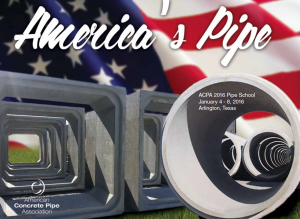(TheConcreteProducer.com) – Customers say concrete is durable, easy to design, and less flammable.
recent survey of key customers of drainage pipe has found that concrete pipe rates highest, by a wide margin, on several important criteria.
Specifiers, departments of transportation, public agency officials, and consultants rated concrete pipe best among all pipe products on several key criteria. These include most durable (87 percent), easiest to design or specify (62 percent), least flammable (84 percent), least installation inspection required (55 percent), least installation sensitive (62 percent), and “greenest” (34 percent).
When asked, “If price were not an issue, which pipe would you specify,” 85 percent chose concrete. Just 9 percent preferred high density polyethylene (HDPE).
Contractors were asked to rate the various pipe options on three key criteria. Concrete pipe was their overwhelming choice based on longest service life (59 percent versus 16 percent for second-ranked HDPE) and least installation sensitive/least dependent on backfi ll (66 percent versus 12 percent for HDPE). Polyvinyl chloride (44 percent) ranked highest for ease of installation.
“The results confirm what we have known for decades–that concrete pipe is a superior drainage product on the most important criteria such as durability, ease of design, and service life expectancy,” says Matt Childs, president of the American Concrete Pipe Association (ACPA). “As with anything, there are always cheaper alternatives. But what might seem less expensive in the short term, costs you more in the long run when you have to repair or replace it sooner than you expected.”
More than 400 respondents completed the survey, which was distributed in November 2011 to industry professionals by ACPA. For more information, visit www.concrete-pipe.org.


